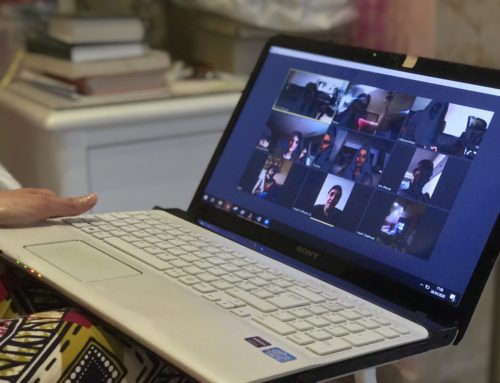One of our nonprofit clients just landed a great opportunity to appear live on a cable network to talk about her organization’s mission.
She’s a wonderful speaker – and she knows her subject matter better than anyone.
But it’s been a long time since she’s been put in front of a camera.
I’m confident she’s going to do a great job. But because TV interviews aren’t opportunities that occur frequently for most people, we’ve been spending some time preparing her for her close up.
Television is a different animal. Not only do you have to know your stuff, you also have to know how to carry yourself in front of a camera.
As a result, it requires a different type of preparation.
To succeed on camera, you have to know your stuff — and it helps to be able to think quickly and provide succinct answers in simple language. As with most forms of communication, you want to avoid using jargon. But the use of insider buzzwords will really hurt you on camera.
Before any TV interview, it helps to create a set of simple, jargon-free talking points – and practice using them.
Your goal is to have 2 or 3 main points you want to make sure you cover and to be able to deliver them in accessible language that viewers can understand. Most interviews – especially live ones – are quite short. And if you’re sitting down for a longer, edited interview, only a few sound bites are likely to be used. You want to feel natural expressing your key points without seeming overly rehearsed.
If you’re on camera to speak about a controversial topic, it’s also important to be prepared for how you’ll answer tough questions. Know what you want to say — and more importantly, what you don’t want to say.
Finally, you also want to be sure that you know how to carry yourself on camera.
Here are six tips to help you appear sharp and in control:
Choose your outfit wisely – Because television is a visual medium, it’s important to follow a basic rule: avoid wearing anything that will distract the viewer from paying attention to what you say. With that in mind, stick with solids and stay away from wearing shirts or jackets that have stripes or busy patterns. Similarly, leave large or shiny jewelry at home and choose something small and simple.
Mind your posture – When on camera, it’s important to sit up straight. If you’re sitting out in the open (and not behind a desk), you can either keep your feet flat on the ground or cross your legs toward the interviewer. If you’re wearing a blazer, we recommend sitting on your jacket so it looks crisp and doesn’t move around.
Forget the cameras – Pretend the cameras aren’t there and look directly at the interviewer. This helps you in a number of ways. First, it keeps you focused on the conversation and not on the fact that there are cameras around you. Second, it prevents you from moving your head back and forth, which can distract viewers. Ultimately, you’ll put yourself and the viewers more at ease if you just focus on the person asking you the questions.
Smile – When on camera, smile as much as possible. This will help you come across well to viewers and will help keep you at ease.
Repeat the question in the answer – One of my favorite tricks for TV interviews is to incorporate the interviewer’s question into the beginning of your answer. This will help you avoid giving short, terse responses, buy you some time to formulate a succinct response, and help create sound bites that will stand on their own. For instance, if the interviewer asks you “What are some ways that viewers can help?”, start your response by saying “One way you can help is to …”.
Avoid these phrases — By repeating a version of the question, you will also avoid starting your answers with distracting verbal tics like “um” and “ah”, or from using crutches like “you know” and “like”. It’s also important to avoid tying back to earlier points by saying “as I said earlier” or “again”. You want to try to focus the viewer on what you’re saying in that moment, while making sure you are creating soundbites that can stand on their own.
Ultimately, your goal is to come across as accessible and knowledgeable.
By following these rules of thumb – and making sure you give complete answers that aren’t laden with jargon – you will be prepared to wow the audience.





